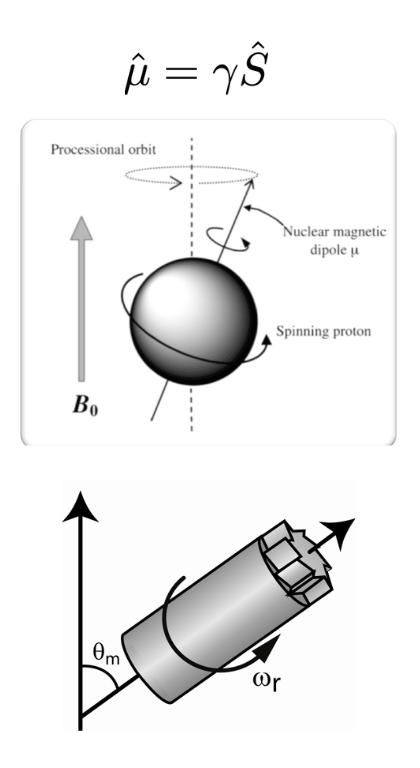BIO NMR lab is located at School of Chemistry, Indian Institute of Science Education and Research at Thiruvananthapuram (IISER Thiruvananthapuram), amidst the lush green hills of the western ghats.
Our group focuses on developing and using NMR tools to study and understand the structure, dynamics and function of biomolecules. We try to address structural biology problems in proteins, particularly in membrane proteins and proteins that are prone to aggregation. We are also working on method development both in solid-state and solution NMR, mainly concerned with its application to bio-molecular NMR studies.
We have expertise in both solid-state and solution NMR techniques with access to 700 MHz narrow bore NMR spectrometer with solution and solid-state capabilities. There is also a 500 MHz NMR spectrometer for organic and peptide works. We also have our own molecular biology lab for protein expression and purification.





Our research areas
Our group works on the interface of solid, and solution state. Our lab focuses on developing and using NMR tools to study, and understand the structure, dynamics, and function of biomolecules. Our main focus in recent years were on characterizing the structural transitions in amyloidogenic proteins, studying the dynamics of molecules, and molecular interactions within biocondensates. Biomolecular condensates is made up of proteins and RNA molecules that are organized into complex, multilayered structures. Liquid-liquid demixing is the physical principle that explains the formation of such condensates. It is the molecular interactions, which opposes the entropy of mixing that drives the liquid-liquid demixing. Hence it is important to characterize molecular interactions in biocondensates.


Amyloidic proteins: Tau
Abnormal aggregation of tau proteins forming the paired helical filaments (PHFs) that constitute the major part of neurofibrillary tangles (NFTs) is symptomatic to many neuronal diseases including chronic traumatic encephalopathy (CTE) and Alzheimer’s. Tau protein is majorly unfolded in solution and slowly aggregates to form long fibrils that constitute the PHFs. In the different isoforms of tau protein, 3 or 4 repeat domains of around 32 amino acid residues are located at the C-terminal part. Our focus is on identifying the initial structural changes responsible for protein aggregation such that better design of aggregation inhibitors can be realized.
We have been working on characterizing the aggregation of tau protein. In our recent work, we were able to show that a section of the protein is sufficient to self-aggregate and form fibrils analogous to the in vivo fibril structure. This should help in invitro assay development for different tauopathies. We also use DEST and other relaxation experiments to understand the interaction between the preformed fibril seeds and monomers.

Amyloidic proteins: CPEB3
An unusual amyloidogenic oligomerization of CPEB proteins is conserved across species, and it is found in drosophila orb2 that helps in the long term memory. We are focusing on structural studies of CPEB3, mainly the N-terminal region which is shown to aggregate. CPEB3 (cytoplasmic polyadenylation element binding) is a translational regulator implicated in long- term memory maintenance. Long term memory requires synapse specific responses. It has been proposed that neurons achieve synapse specificity by restricting the translation of the new mRNAs to activated synapse by the use of a specific tag (synaptic tag) that capture the necessary mRNAs.
CPEB3 acts as the synaptic tag in mammalian neurons since it is known to be activated by synaptic stimulation, which leads to a spatially restricted protein aggregation. The prion nature of CPEB3 constitutes a molecular basis for the maintenance of synaptic facilitation underlying long-term memory storage. It is important to know the structural significance of the prion domains in the protein CPEB3 that is contributing to its function in maintaining long-term memory. Also it is noteworthy to identify the essential subdomain of CPEB3 that confers the prion-like characteristics to the protein. We have been making considerable progress in mapping the aggregation of different segments of CPEB3 protein, whose prion character is responsible for the long-term memory in mammals. We have recently reported that the first prion sub-domain PRD1 of mouse CPEB3 can autonomously form amyloid fibrils in vitro and punctate-like structures in vivo. A ninety-four amino acid sequence within the PRD1 domain, PRD1-core, displays high propensity towards aggregation and associated amyloid characteristics. PRD1-core is characterized using electron microscopy, X-ray diffraction, and solution-state NMR deuterium exchange experiments.

TIA-1
T cell intracellular antigen-1 (TIA-1) protein is a prion-related RNA binding protein that is one of the constituents of stress granule. The protein contains an intrinsically disordered prion-related domain at its C terminus and an RNA binding domain at the N-terminus. TIA1 self-multimerize and phase separate at low concentrations. The factors affecting TIA1 aggregation and the underlying structural changes are also yet to be determined. We have now started working on the phase-separated state of TIA1 protein.
METHOD DEVELOPMENT
We are particularly interested in developing methodology using residual dipolar couplings for different aspect of protein functional characterization. We are also interested in using RDCs for structure elucidation of organic molecules.

